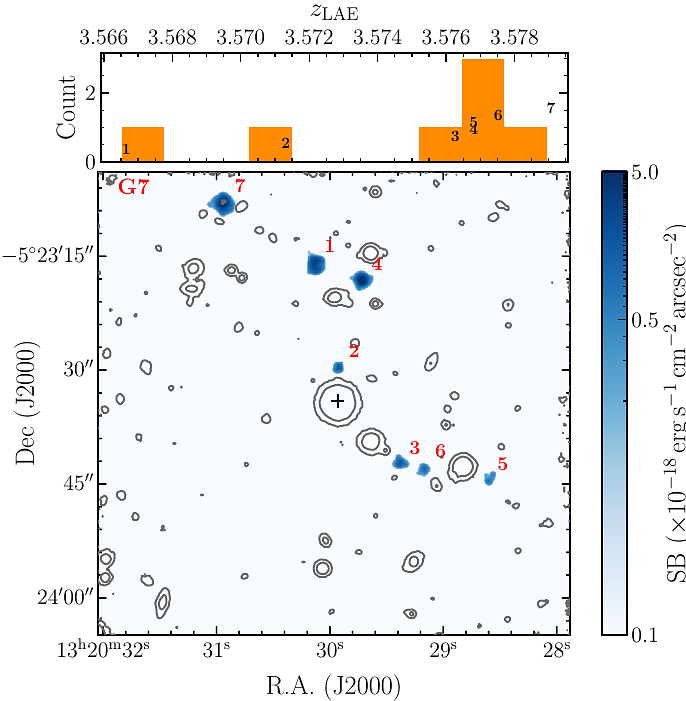MUSEQuBES: Unveiling Cosmic Web Filaments at $z\approx3.6$ through Dual Absorption and Emission Line Analysis

MUSEQuBES: Unveiling Cosmic Web Filaments at $z\approx3.6$ through Dual Absorption and Emission Line Analysis
Eshita Banerjee, Sowgat Muzahid, Joop Schaye, Sebastiano Cantalupo, Sean D. Johnson
AbstractAccording to modern cosmological models, galaxies are embedded within cosmic filaments, which supply a continuous flow of pristine gas, fueling star formation and driving their evolution. However, due to their low density, the direct detection of diffuse gas in cosmic filaments remains elusive. Here, we report the discovery of an extremely metal-poor ($[ X/H] \approx -3.7$), low-density ($\log_{10} n_{\rm H}/{\rm cm^{-3}} \approx -4$, corresponding to an overdensity of $\approx 5$) partial Lyman limit system (pLLS) at $z\approx3.577$ along the quasar sightline Q1317--0507, probing cosmic filaments. Additionally, two other low-metallicity (\met$\lesssim -2$) absorption systems are detected at similar redshifts, one of which is also a pLLS. VLT/MUSE observations reveal a significant overdensity of \lya\ emitters (LAEs) associated with these absorbers. The spatial distribution of the LAEs strongly suggests the presence of an underlying filamentary structure. This is further supported by the detection of a large \lya\ emitting nebula with a surface brightness of $\geq 10^{-19}~\rm erg~cm^{-2}~s^{-1}~arcsec^{-2}$, with a maximum projected linear size of $\approx 260$~pkpc extending along the LAEs. This is the first detection of giant \lya\ emission tracing cosmic filaments, linked to normal galaxies and likely powered by in-situ recombination.